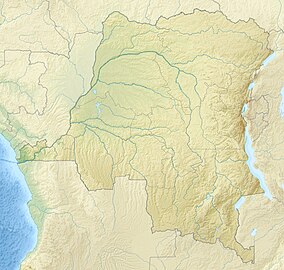Upemba National Park
| Upemba National Park | |
|---|---|
|
IUCN category II (national park)
|
|
| Location | Katanga Province, Democratic Republic of the Congo |
| Coordinates | 9°1′S 26°35′E / 9.017°S 26.583°ECoordinates: 9°1′S 26°35′E / 9.017°S 26.583°E |
| Area | 11,730 km2 (4,530 sq mi) |
| Established | 1939 |
| Governing body | l'Institut Congolais pour la Conservation de la Nature (ICCN) |
Upemba National Park is a large national park in Katanga Province of the southeastern Democratic Republic of Congo, formerly Zaire.
At the time of the creation of Upemba National Park, on 15 May 1939, the park had a surface area of 17,730 square kilometres (6,850 sq mi). It was the largest park in Africa. In July 1975, the limits were revised and today the integral park has an area of 10,000 square kilometres (3,900 sq mi) with an annex of a further 3,000 square kilometres (1,200 sq mi).
Its lower section is located in the Upemba Depression, a lush area of lakes and marshes including the eponymous Lake Upemba, and bordered by the Lualaba River. Its higher section is in the dryer Kibara Plateau mountains.
Upemba National Park was first established in 1939. As with much of the wildlife of the region, in contemporary times the park continues to be threatened by the activities of poachers, pollution, and the activities of refugees and militia.
There are also a handful of villages in the park. In recent years, the park has come under considerable attack from poachers and local militias. On 28 May 2004, for instance, the park headquarters in Lusinga came under attack by the Mai Mai militia. Several wardens and their families were killed, the headquarters were burned down, and the family of the chief warden was taken hostage.
On 1 June 2005, the protectors of the park received the Abraham Conservation Award for their role in protecting the rich biodiversity of the Congo River basin.
The habitat of the park varies from grassland at higher altitudes, through forests, woodlands, to rainforest, and lakes and streams with riparian zones, marshes, and wetlands at lowest altitudes. It is home to some 1,800 different species, some of them discovered as late as 2003.
...
Wikipedia

